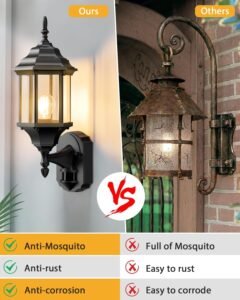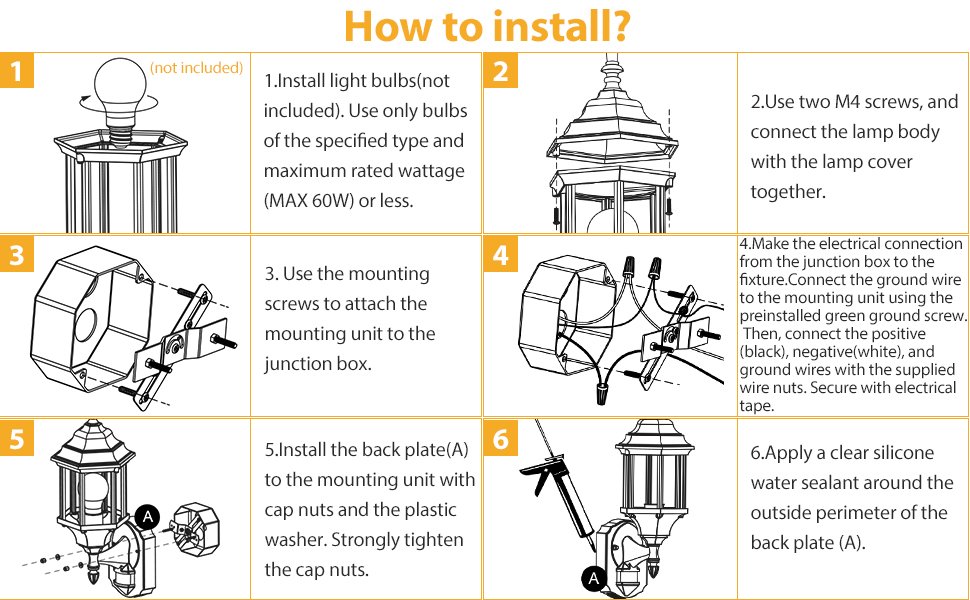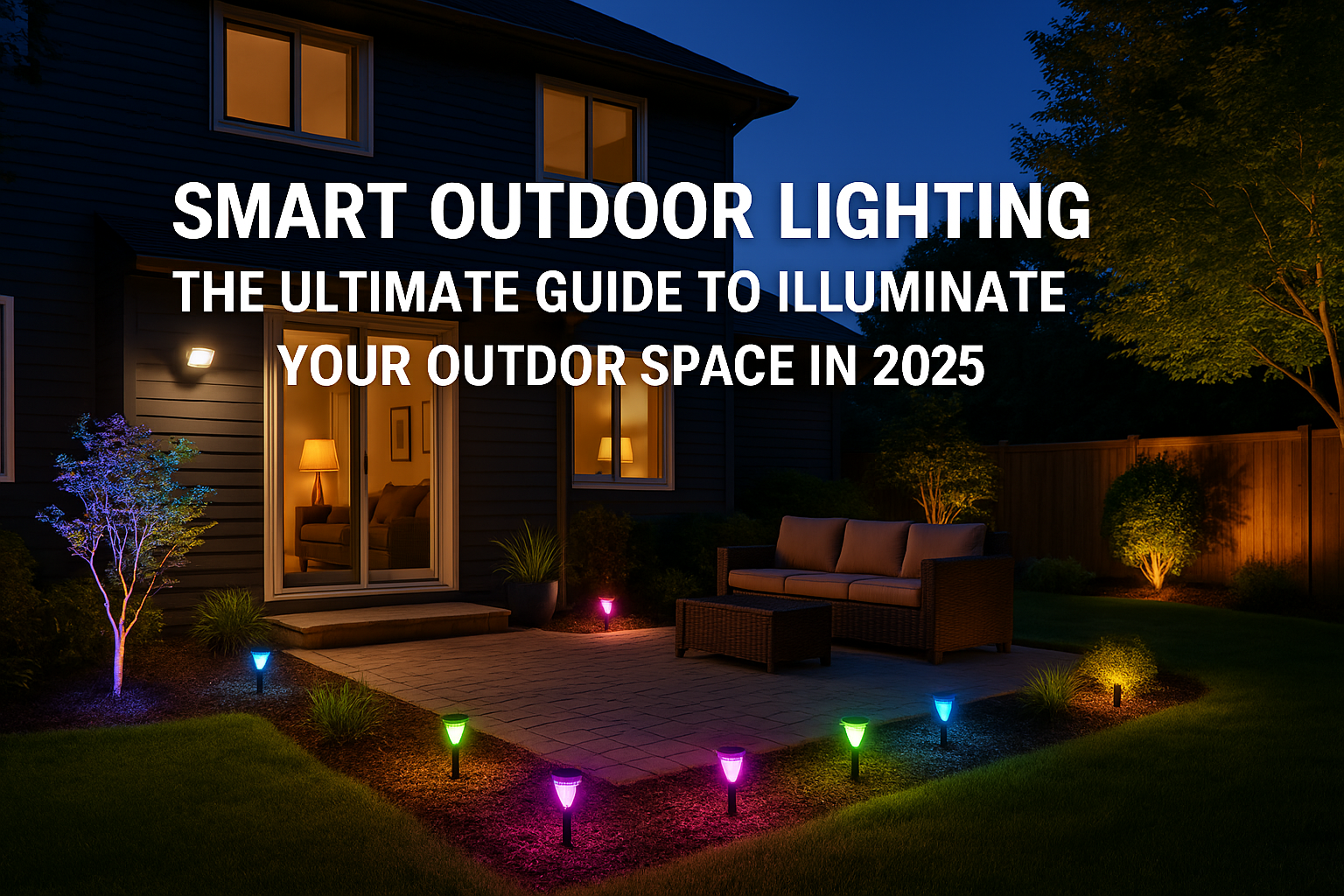
Lighting your driveway and front entrance is not just about aesthetics; it’s an essential step toward improving home security, enhancing convenience, and boosting curb appeal. With advancements in smart home technology, smart light sensors have become an easy and effective way to optimize outdoor lighting. Whether you want to deter intruders, make a great first impression on guests, or simply automate your home lighting, smart light sensors are a game-changer.
This guide will walk you through how smart light sensors can transform your driveway and front entrance, the benefits they provide, and practical recommendations to get you started.
Why Use Smart Light Sensors for Driveways and Front Entrances?
Before we jump into the specifics, let’s explore why smart lighting for your driveway and front entrance matters in modern smart homes. Outdoor lighting serves multiple purposes:
- Enhanced Safety and Security
Poorly lit driveways and entrances can make your home vulnerable to break-ins. By installing smart light sensors, you can deter unwelcome visitors by illuminating dark areas whenever motion is detected.
- Convenience for Homeowners and Guests
Coming home after dark? Smart sensors can light up your path automatically, making it easier to park, unlock your door, and carry groceries inside.
- Energy and Cost Savings
Traditional outdoor lighting often runs all night, consuming unnecessary energy. Smart lighting safety systems use motion or ambient light sensors to activate only when needed, significantly reducing electricity usage and costs.
With these benefits in mind, let’s explore the features to look for in smart light sensors and how to maximize their potential.
Benefits of Using Smart Sensors in Your Driveway and Entrance
1. Improved Safety and Security
Having smart lighting safety systems installed in your driveway and entrance can be a deterrent to intruders. Motion sensor lights automatically detect movement and flood the area with light, discouraging any unwanted activity.
2. Welcome Lighting for Guests
Smart light sensors create a warm and welcoming experience for guests arriving at your home. They can detect cars pulling into your driveway or guests walking up your front steps, lighting their way with ease.
3. Energy Efficiency
Unlike traditional lights that stay on for hours, smart sensors improve energy efficiency by activating only when necessary. Combine this with LED bulbs for even greater savings, potentially cutting energy costs by up to 60%.
Did You Know? Using motion sensors for driveway lighting can save up to $100 annually on electricity bills when compared to traditional lighting.
Key Features to Look For in Smart Light Sensors
When choosing smart light sensors for your driveway and front entrance, consider the following factors:
1. Motion Detection vs. Ambient Light Sensors
- Motion Detection Sensors detect physical movement using infrared or microwave technology. Ideal for driveways and entrances, these sensors light up the area only when there’s activity.
- Ambient Light Sensors respond to the level of natural light and automatically adjust brightness levels. They’re perfect for maintaining a consistent aesthetic in your outdoor lighting.
2. Brightness and Range
Check the brightness level (measured in lumens) and the range of detection. Driveways often require sensors with higher lumens (1000-1500 for large areas) and long detection distances (up to 30 feet).
3. Integration with Smart Platforms
Look for smart sensors that seamlessly integrate with platforms like Alexa, Google Home, or Apple HomeKit. This allows you to control your driveway lighting remotely or schedule automation through voice commands.
4. Weatherproofing
Outdoor lights are exposed to harsh weather conditions, so ensure the sensors have an IP65 rating (or higher) to withstand rain, dust, and extreme temperatures.

Best Placement Tips for Driveway and Front Entrance Sensors
Where you position your smart light sensors can make or break your lighting system. Follow these tips for optimal placement:
Driveways
- Garage Doors
Mount sensors above your garage doors to light up the driveway when you arrive or leave.
- Driveway Entrance Gates
Install sensors at the gate or driveway entrance to detect incoming vehicles.
- Pathways and Sidewalks
Place additional lights along pathways for added visibility and safety.
Front Entrances
- Above Doorways
Mount sensors above the main entrance to illuminate the space whenever someone approaches.
- Porches or Steps
Install lights along porch ceilings or near steps to prevent trips and falls.
Avoiding False Triggers
To prevent false activations caused by passing cars, animals, or weather conditions, ensure sensors are angled correctly and not pointed toward roads or heavily trafficked areas. Some advanced models even allow sensitivity adjustments to reduce false alarms.
Top Smart Light Sensor Models for Your Driveway and Entrance
To help you choose the best light sensor for your specific needs, we’ve rounded up a few highly rated models:
- Philips Hue Outdoor Sensor
-
- Integration: Works with Alexa, Google Home, and HomeKit
- Features: Motion sensor, weatherproof design, customizable alerts
- Ideal For: Driveways and large front entrances
- Ring Smart Lighting Motion Sensor
-
- Integration: Compatible with Ring devices and Alexa
- Features: Extended detection range, advanced motion sensitivity
- Ideal For: Enhancing security around driveways and doorways
- LITOM Solar Motion Sensor Light
-
- Integration: Standalone solar-powered unit
- Features: Wide-angle illumination, energy-efficient solar charging
- Ideal For: Sustainability-conscious homeowners
- LEONLITE LED Security Light
-
- Integration: Basic on/off control with motion detection
- Features: High-brightness LED, adjustable heads, weatherproof
- Ideal For: Budget-friendly driveway lighting
- Wyze Cam Floodlight
-
- Integration: Works with Wyze cameras and Alexa
- Features: Built-in camera for added security, ultra-bright LEDs
- Ideal For: Combined lighting and video surveillance
These models cover a range of price points and features, ensuring there’s something suited for every homeowner.
Installation and Setup Tips for Smart Sensors

Setting up your smart light sensors might feel overwhelming, but it’s simpler than you think. Here’s how to do it effectively:
- Read the Manual
Each sensor model comes with its own setup guide. Follow instructions closely for optimal placement and calibration.
- Test Detection Settings
Adjust the motion sensitivity and lighting duration to fit your specific needs. For example, a shorter lighting duration reduces energy use, while longer durations are better for security.
- Sync with Smart Hubs
If your sensors are compatible with Alexa, Google Home, or HomeKit, follow pairing instructions to connect them to your smart home ecosystem.
- Regular Maintenance
Clean sensors periodically to avoid obstruction by dirt or debris, ensuring they work efficiently year-round.
Elevate Your Home’s Entrance with Smart Light Sensors
Investing in smart light sensors for your driveway and front entrance isn’t just a tech upgrade; it’s a step toward a safer, more convenient, and sustainable home. By choosing the right sensors, placing them strategically, and integrating them with your smart home system, you can create a seamless lighting experience tailored to your lifestyle.
Which model will you try first? If you’re new to smart home technology, start small with an entry-level model, and experiment with its features. Your driveway and front entrance will never feel more inviting.
